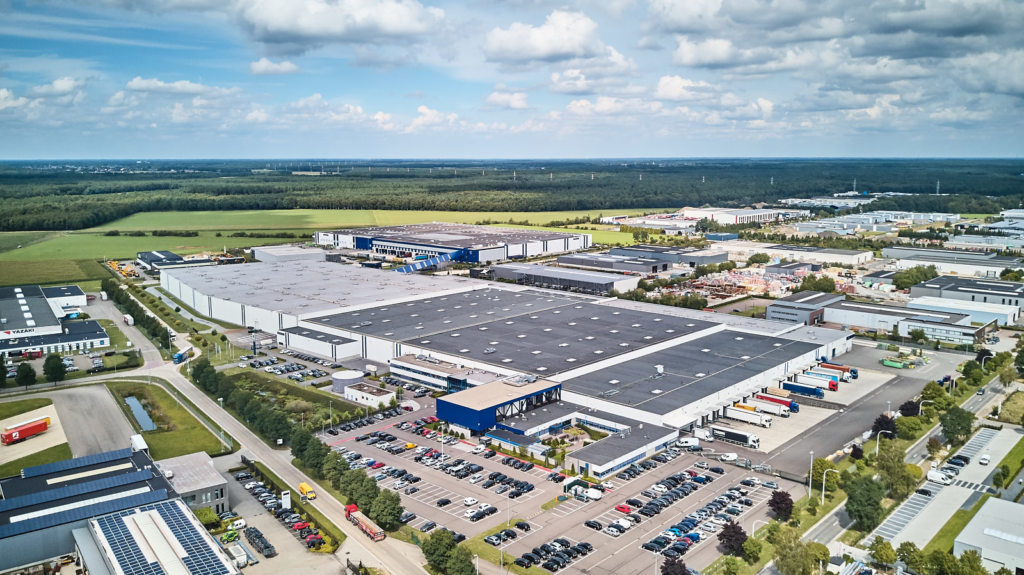Interview |
Scania Parts Logistics goes for error-free logistics with intelligent video analysis
 Veerle Rakels, project manager at Scania Parts Logistics: “Via video, we were already able to identify some processes where our standards were not completely watertight. Video analysis also provides evidence that an error did not happen in our warehouse.”
Veerle Rakels, project manager at Scania Parts Logistics: “Via video, we were already able to identify some processes where our standards were not completely watertight. Video analysis also provides evidence that an error did not happen in our warehouse.”
What if you could ensure that order processing, preparation and shipment of goods run smoothly? Scania Parts Logistics uses intelligent video services from SiB Solutions for this purpose. Veerle Rakels, project manager at Scania, talks about the results and the enormous potential for quality control, customer care and process improvement.
Scania Parts Logistics is responsible for the worldwide distribution of all Scania spare parts. From the distribution centre in Oudsbergen in Limburg, Belgium, 33,000 order lines are shipped daily to Scania Business Units and dealers all over the world. This makes Scania Parts Logistics the beating logistics heart of the entire Scania Group. The company’s ambition is clear: to develop the best possible distribution structure to guarantee customers a premium logistics solution which also contributes to maximum uptime of vehicles.
The range that Scania Parts Logistics distributes is very wide. These include parts for trucks, buses, industrial and marine engines, as well as special tools, accessories and exchange units.
Worldwide distribution
“Today more than ever we focus on the needs of our customers,” says Project Manager Veerle Rakels. “Whether they drive trucks, buses, coaches or motorcycles, if a defect occurs, a tailor-made solution must be found quickly. We take care of that, so our customers can continue to press the accelerator pedal.”
With activities on five continents and customers in more than a hundred countries, the company needs a sophisticated distribution structure. At the centre is the Scania Parts Center, the central warehouse in Oudsbergen with a total area of 155,000 square meters. There are 850 permanent employees, and another 200 on an interim basis working to respond to changes in capacity and to cope with busy periods.
Seven European regional warehouses (in the UK, Spain, Austria, Poland, Italy, Sweden and Norway) allow urgent orders to be delivered on time to the dealer network. Outside Europe, there are Parts Centres in Mexico, Brazil, South Africa, Indonesia and Singapore, which enable a global distribution of parts.

Sustainable logistics
Making logistics processes more sustainable is high on the agenda at Scania Parts Logistics. The company identified three priority areas in which it must perform to remain sustainably active in the future: less CO2 emissions, more circular entrepreneurship and more sustainable use.
Veerle Rakels: “Sustainable transport is all about transporting people and goods, while contributing to economic and social development – without endangering human health and safety or the environment. There is no single solution to make the transport system more sustainable. Rather, a comprehensive approach is needed, given the specific transport assignments and the completeness of the infrastructure for transport and logistics in different parts of the world.”
Detecting errors with technology
Advanced technological innovations should make this possible. Scania Parts Logistics already uses barcodes, RFID, voice and other technologies in the field of mobile data entry to optimize storage, handling, production, transport and distribution of goods. But even the best logistics companies make mistakes. And they come in different shapes and sizes. Picking errors or transport damage are just a few examples.
“We also know that sometimes mistakes creep into our process,” Veerle Rakels admits. “Of course, this does not match our ambition to offer premium solutions for our customers and operate flawlessly. We asked ourselves the question: where does it still go wrong? Is it purely human error or is the problem in the processes? What can we improve and how do we tackle this? Although we already had a lot of data, we could not always find out the causes of errors.”
Double costs
‘Flawless’ logistics is an important ambition for companies that want to keep an eye on their ecological footprint, and financially a lot depends on it. In the logistics sector, goods worth an estimated ten billion euros disappear every month. If a wrongly-picked item is returned, this will lead to unnecessary shipment(s) and handling of goods. All resources including packaging material that have to do with the return shipment amount to waste.
Ditto for goods that are lost or arrive damaged, because the company has to replace and resend them with a new product. The result: greater CO2 emissions due to double transport. The costs associated with solving such problems are also twice as high.
Intelligent video analysis
In its search for additional solutions to further reduce the margin of error, Scania Parts Logistics came across SiB Solutions, a Swedish logistics technology company. SiB Solutions wants to put an end to errors. It aims to improve the world of logistics by using advanced technologies, including artificial intelligence (AI), the Industrial Internet of Things (IIoT) and intelligent video analytics.
Scania Parts Logistics uses a video analysis system from SiB Solutions to film processes in the warehouse, especially in the areas where they suspected there were still errors. “Timing plays a role in complaints handling,” Veerle Rakels explains. “Suppose a wrong order is picked somewhere and sent to a customer. The moment the customer submits a complaint, we are often already a week or two further. That doesn’t make it any easier to find out exactly where things went wrong.”
The application of SiB Solutions can be compared to a search database. By filming goods processing and linking it to certain steps in the process, it is possible to see afterwards what exactly happened and when exactly that happened. Seeing is believing, in other words. In practice, intelligent video cameras first record critical steps in the logistics process in close-up, for example during order picking in the warehouse. The system processes that video material locally and converts it into metadata. In the cloud, this metadata is then combined with other data from the logistics systems and processes. That input can come from barcode registration systems, warehouse management systems, and much more.
AI software then analyzes all the data and creates useful information and action points. Scania can investigate errors by searching the video material, based on references like order ID, article number, customer number, events and other specific activities in the supply chain. This way there is clarity quickly if a claim or a deviation arises.
Find the error
“Video turns out to be a very powerful tool for root cause analysis,” says Veerle Rakels. “In the relatively short time that we’ve used the system, we have already identified some processes where our standard turned out not to be completely watertight. It allowed us to make the necessary adjustments. On the other hand, video analysis shows that the error did not happen in our warehouse. Even then, it is an important instrument. There is visual evidence. This helps to give customers a clear answer to their questions quickly, or to point out to transport partners that things went wrong for them somewhere.”
“But,” Veerle Rakels says, “no matter how powerful the tool is, it is not a miracle solution for everything, where you find out everything and detect every error. In some cases, video analysis just creates more questions. But it for sure is a very useful tool to find out layer by layer where the causes of errors lie. And it offers enormous potential in terms of safety.”
The solution takes into account employee privacy. Camera surveillance on the work floor is subject to strict regulations, both within European GDPR legislation and in CAO 68 for the logistics sector.
Veerle Rakels: “Camera surveillance is only permitted for the control of the production process. Suppose we see on the images that it would be a human error, then we are not allowed to give individual feedback to the employee in question. For example, if we see that these are mistakes that occasionally recur, we can raise it as a general point of work in the teams involved.”
Assistance in real time
In addition to the video analysis, Scania Parts Logistics and SiB Solutions are looking together at applications with artificial intelligence that can improve warehouse operations. For example, a new Smart Assistant has recently been introduced. Via augmented reality (AR), light signals or sound, it guides the operators in real time with the right actions or attracts attention if something does not go right.
Veerle Rakels: “An interesting example is the channel for the empty bins. At the end of an order processing process, we collect the empty bins at a central location in the warehouse. Sometimes it happens that order pickers find goods there that did not go with the order. The problem is that this often only happens when the transport has already left. That’s why we installed a smart camera above that spot. The camera detects if something remains and can give a signal to the team leader, who zooms in on the bin number and can still process the article in time.”
Extra insights:
In Oudsbergen, Belgium, Scania Parts Logistics processes and ships 33,000 order lines daily to Scania Business Units and dealers all over the world. Camera surveillance is only permitted for the control of the production process.
Source: The text was originally published in Dutch in magazine Value Chain Management issue 2022 05. Read Dutch version here >>



